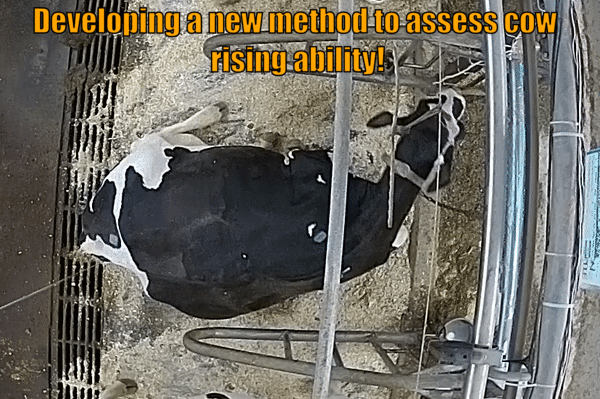#ISAE2018 #CowlifeMcgill #GradLIfeMcGIll #Ethology #McGillUniversity #InternationalSocietyForAppliedEthology #cowwelfare #welfare #TiedStall #AnimalScience #PrinceEdwardIsland #CanadainScience #EthologyHealthWelfare #Canada #WomeninScience
PRINCE EDWARD ISLAND CANADA
CowLife McGill took a knowledge-pack, fun-filled trip to the Canadian Atlantic coast for the 52nd annual meeting of the International Society for Applied Ethology (ISAE) in beautiful Charlottetown, Prince Edward Island. With nearly 300 delegates from 27 countries, the conference was a veritable who’s who of the ethology field! This year’s theme was particularly fitting for our research here in the CowLife lab: “Ethology for health and welfare”.
Between walks on many of P.E.I.’s pristine beaches and a half dozen ice cream cones each from Cow's Creamery, we saw some pretty amazing presentations! Check out our twitter account from July 30 to August 3rd to get a glimpse at some of the new and interesting studies emerging in ethology and dairy cattle science. We cannot wait to apply some of our new-found knowledge to our future research studies!
Our team also had the opportunity to share a bit of our newest research findings with this year’s congress. Dr. Elsa Vasseur presented the work of Research Assistant, Athena Zambelis, in a poster entitled “Development of a rising and lying-down ability index in dairy cattle and its relationship with other welfare outcome measures”.

Athena’s work outlines and validates a new scoring system to assess the rising and lying-down ability of dairy cows which our lab has already started to incorporate into our ongoing research. She has also worked to determine the relationship between indicators cow rising and lying-down ability and other outcome measures of welfare, finding that these indicators were associated with injury severity, body size, and lying time in cows.

MSc candidate Véronique Boyer presented a poster on the findings of her research on chain length of dairy cows entitled “Loosening the ties we put on dairy cows”. In her research, Veronique found that a longer chain improved the cow’s overall opportunity of movement within the stall, with cows using and exploring more of their stall and also showing improved ability to lie down with ease.

PhD candidate, Elise Shepley (above), presented her findings on the ways in which housing during the dry period affects cow lying behaviors, and, oh boy, was there a lot of findings to deliver on that topic! Housing dry cows in loose-pens for the 8-week dry period not only increased lying time for these cows compared to tie-stall housed dry cows, but the loose-pen cows also showed greater ease of movement in lying with cows “stretching” their legs more often when provided more space and displayed more sleep-related head postures. Not only that, but, when provided more space and less stall hardware, cows also showed improved ability to rise and lie down, particularly with regard to reducing contact with the cow’s environment during these actions. Needless to say, Elise was a bit breathless by the end of the 15 minute presentation. And that is only the half of it! CowLife McGill looks forward to Dry-Cow Study Part II, wherein we delve into locomotion and how our lab is using technology to better understand locomotor ability and gait, so stay tuned for that!
On the topic of the International Society for Applied Ethology conference, the CowLife team will sign off with one last picture! While it did not rain for the entirety of the conference, we look forward to using our ISAE 2018 umbrellas next year in Bergen, Norway (but will switching the ‘8’ to a ‘9’)!
Also…trip number 6 to Cow’s Creamery…

Don't forget to subscribe for more of our CowLife!











Comments